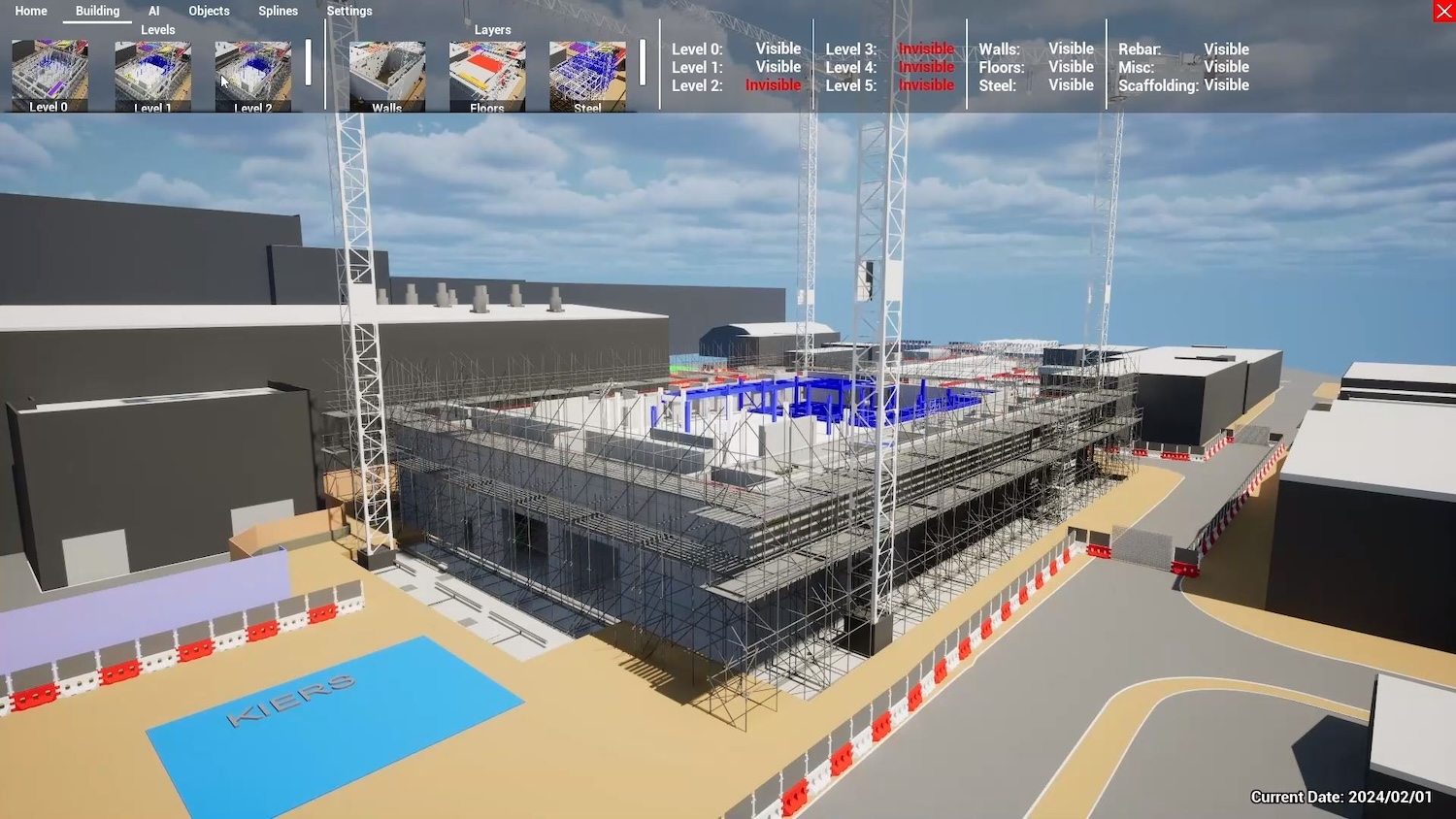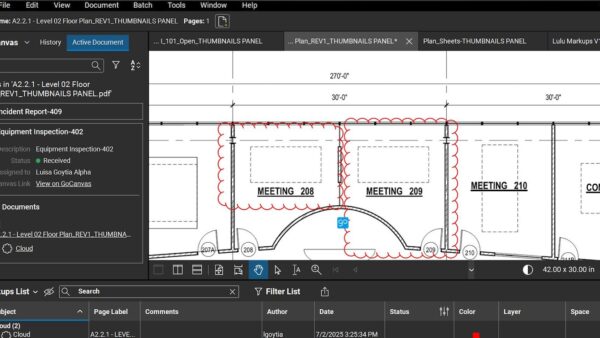
4D planning is often misunderstood, reduced to an animated model used to impress stakeholders. For those managing complex infrastructure programmes, 4D is far more than a visualisation tool. By connecting the time element to the 3D model, 4D planning provides a dynamic representation of how construction will progress, argues Kurt Metcalfe at Proicere Digital.
But more importantly, it provides a mechanism to validate plans, simulate scenarios, align workfaces, and proactively respond to change. It becomes a central decision-support tool, not just a communication output.
Rather than a one-off visualisation, 4D planning offers several functions that deliver continuous value:
1. Validating constructability
Initial animations rarely produce a fully workable sequence. A 4D schedule allows stakeholders to explore beyond static sequences, exploring how tasks interact in time and space. This includes ensuring access, avoiding rework and safely coordinating multiple trades and vehicle movements in confined areas.
Time-lapse simulations often expose risks invisible in static models, enabling design teams to resolve them before construction begins. For one infrastructure programme exceeding £1bn in value, for example, our integrated 4D workflows helped identify more than £80m in potential rework.
Rather than simply visualising the design, 4D planning supports programme assurance, feeding directly into schedule health checks, readiness reviews, and mitigation strategies.
2. Scenario simulation
Construction is rarely linear. Delays, design changes or delivery issues can quickly create cascading problems. 4D planning allows clients to simulate ‘what if’ scenarios and understand knock-on effects well in advance, taking planning further than a static Gantt chart.
Even minor delays, such as a postponed window delivery, can trigger compensation events or extend prelims, stalling follow-on works such as electromagnetic installation or internal finishes. This makes 4D not only reactive, but strategic, a way to interrogate decisions in a controlled, low-risk environment.
3. Virtual rehearsals for risky operations
Digital rehearsals, informed by 4D scheduling, are simulations of high-risk activities such as major lifts, tunnel breakthroughs, or works adjacent to live assets. Using virtual reality environments, these simulations improve site team confidence and support structured safety briefings and readiness assessments.
4. Monitoring and reporting progress
The tool can also be used for performance monitoring. Using mobile apps, cameras or laser scans, site teams can link live site data to track work-in-progress and delayed project tasks. Visual representations can include split screens to show a side-by-side planned versus status comparison, highlighting delays or deviations from the schedule in red, for instance.
4D planning is an effective way of identifying delays early, so teams can introduce catch-up plans before costs and delays escalate. Getting the buy-in from all stakeholders requires fostering a culture of shared responsibilities, collective learning and mutual respect.
5. Enhanced safety planning
Construction sites are constantly evolving. What is considered a safe access one day may be a hazard the next. Modern 4D safety planning resolves this by including AI-powered tools that simulate safe egress routes, highlight high-risk zones and adapt site logistics as the model evolves.
Daily visual updates can be generated in minutes – during a meeting if new information is presented, for example – saving time.
AI can further enhance 4D planning by analysing historical site data to anticipate safety risks. With access to inspection reports, worker hours and compliance records, predictive tools can help reduce incidents before they happen, reinforcing a proactive safety culture.
6. Facilitating communication and decision-making
Beyond technical benefits, 4D planning plays a vital communication role. It simplifies complex sequences into digestible visual simulations for all stakeholders, whether it’s clients, contractors or site operatives, encouraging collaboration and shared understanding. It becomes a unifying reference point that aligns the entire team, helping to avoid costly misinterpretations or duplicated effort.
Interoperability is a key requirement for 4D success. A robust planning tool must exchange data with BIM authoring platforms, scheduling software and project management systems.
4D planning should also integrate with the fifth dimension of building information, where time-linked models are also associated with cost data.
When connected to the 5D environment, 4D becomes a powerful commercial tool. Model changes or programme delays automatically update cost plans, highlight changes in resource profiles, and trigger procurement alerts. This allows commercial teams to see the impact of scope and sequence changes in real-time.
Integrated 4D planning, therefore, provides a living forecast of what has happened, what is likely to happen, and how much it will cost – increasing visibility, reducing surprises, and improving commercial control.
A dynamic document for the lifecycle
Ultimately, the 4D planning model is not a static artefact: it is a live, adaptable, dynamic document that evolves with the project.
Best value is achieved by implementing 4D planning as a core part of the project control environment. Tightly integrated with cost, risk, safety and performance forecasting, 4D planning helps clients drive informed decisions, reduce risk and maintain momentum from day one to handover.















